The Sacred Fount – Henry James
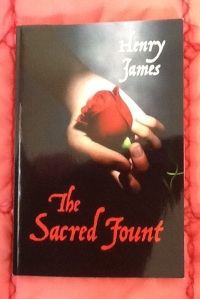
THE SACRED FOUNT by Henry James
HJ CLASSICS – Wildside Press
I purchased this book at the suggestion of Facebook friend Matteo Carnio in answer to my question: what shall I review next?
I thought this book looked attractively intriguing. In fact, a real find.
Become my Facebook friend and please make your own suggestions.
I intend to real-time review it in the comment stream below…
Filed under Uncategorized


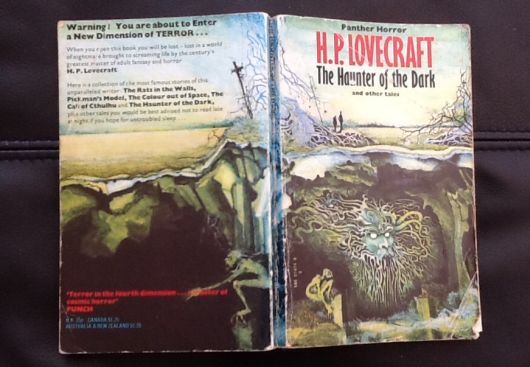


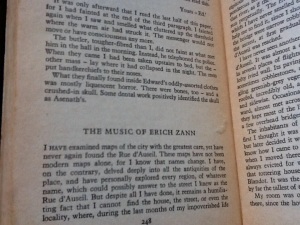
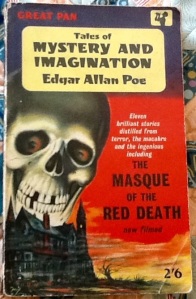
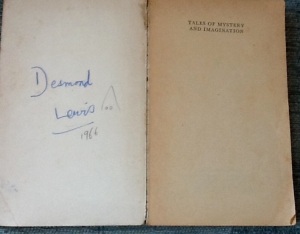
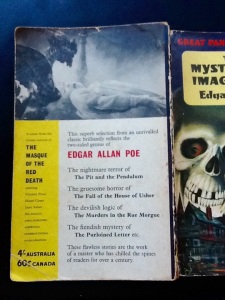
“People talk of our changing every seven years, but they make me feel as if I changed every seven minutes.”
I feel at home simply being me, gauging other people from tentacular-claused beginnings of their story as common with me and their endlessly nested motivations. I seemingly take a train journey toward a house party, two of whose guests I meet on the way, during this train journey. Other guests are also likely to be on the same train… [Reminds me of a similar train journey and of Jeff VanderMeer’s comments about me here in his 2nd paragraph of the ‘My Storyville Weekend’ section.]
“The links, in fact, should I count them all, would make too long a chain. They formed, nevertheless, the happiest little chapter of accidents, though a series of which I can scarce give more than the general effect.”
Indeed, that also applies to my review of the links I manage to make into a gestalt now I am at the house party itself. As the reader, meanwhile, I can hardly believe that this text seems to be the apotheosis of grappling with the same author’s Golden Bowl, and only rarely in a single life can anyone reach such a literary orgasm.
With imagination like an insect bumping on glass, and people like hat-pins or furniture polish, I witness – and try to fathom like a whodunnit detective, as the narrative guest at this gathering – a complexly subtle series of people as ‘touchstones’, centring so far upon a tale about relationships as relativities of growing younger and growing older. Age Vampirism.
This highly polished text is infuriating, frustrating, relentless – and I have only scratched its surface judging by the relatively small number of pages I’ve so far got into it – yet it is absolutely engulfing me, strongly reminding me of the convoluted but insanely logical grappling with multiple bluffs and nested intentions of Poe’s ‘Purloined Letter’ and ‘The Mystery of Marie Rogêt’ that I fortuitously read in the last few days and reviewed here.
The words ‘sacred fount’ are used twice in this chapter.
I’m currently brainstorming questions: Not only age- or time-parasitism but also an inferred sex-power of incubus or succubus?
Who or what is the sacred, who or what the unholy: Observer or observed? Reader or narrator? Freehold author or leasehold narrator?
The picture browsed over with Mrs Server says something about this book, whether it is serious or not as a work of art, this book or this picture within it:
“It’s the picture, of all pictures, that most needs an interpreter. Don’t we want,” I asked of Mrs. Server, “to know what it means?” The figure represented is a young man in black—a quaint, tight black dress, fashioned in years long past; with a pale, lean, livid face and a stare, from eyes without eyebrows, like that of some whitened old-world clown. In his hand he holds an object that strikes the spectator at first simply as some obscure, some ambiguous work of art, but that on a second view becomes a representation of a human face, modelled and coloured, in wax, in enamelled metal, in some substance not human. The object thus appears a complete mask, such as might have been fantastically fitted and worn.
This book is about characters changing (almost overnight) so far, about possession, symbiosis, parasitism, bluff and multiple bluff, assessment of character through various pecking orders of narrative, of reading and reviewing it, a nightmare of a read.
After all my condensed comparisons above with other fiction writers, I am beginning to feel that this method of mine in real-time reviewing the book is matched by its narrator’s own anal-retentiveness about what and who are happening around him within that same book, thus effectively changing what and who are happening simply by his (my) obsessing about them in the first place?!
The music is as if helping the emotionally conspiring thoughts to stay inside each person’s head and worked out individually rather than escaping to become a dangerous Jungian collective unconscious as facilitated like an inflammatory disease by the Narrator enticing such thoughts into the air of this public text?
So far as it took place it was of a “subtlety,” as we used to say at Newmarch, in relation to which the common register of that pressure would have been, I fear, too old-fashioned a barometer. I had moreover the comfort—for it amounted to that—of perceiving after a little that we understood each other too well for our understanding really to have tolerated the interference of passion, such passion as would have been represented on his side by resentment of my intelligence and on my side by resentment of his. The high sport of such intelligence—between gentlemen, to the senses of any other than whom it must surely be closed—demanded and implied in its own intimate interest a certain amenity. Yes, accordingly, I had promptly got the answer that my wonder at his approach required: he had come to me for the high sport. He would formerly have been incapable of it, and he was beautifully capable of it now.
Newmarch is the place where this party is situated. A new word for Avant Garde?
If I was free, that was what I had been only so short a time before, what I had been as I drove, in London, to the station. Was this now a foreknowledge that, on the morrow, in driving away, I should feel myself restored to that blankness? The state lost was the state of exemption from intense obsessions, and the state recovered would therefore logically match it. If the foreknowledge had thus, as by the stir of the air from my friend’s whisk of her train, descended upon me, my liberation was in a manner what I was already tasting. Yet how I also felt, with it, something of the threat of a chill to my curiosity! The taste of its being all over, that really sublime success of the strained vision in which I had been living for crowded hours—was this a taste that I was sure I should particularly enjoy? Marked enough it was, doubtless, that even in the stress of perceiving myself broken with I ruefully reflected on all the more, on the ever so much, I still wanted to know!
Judging by the number of chapters left, he doesn’t leave?
This is how I felt (and feel) about this book, on the few occasions when I, too, in exasperation, have thought (and think) about leaving! But can a book actually have a ‘heroic grin’?
“…and, even while I prolonged the movement by which I had momentarily stayed her,…”
This comes full circle to that ‘seven years / seven minutes’ quote from the book I gave at outset. It has suddenly dawned on me – and I hope it is not a spoiler – this whole book represents a ‘Tristram Shandy’ prolongation of time-altering, placing ohm resistors and baffles into the tube of narration, to prevent the Narrator’s birth, with Tristram himself narrating his own life story that never seems, at least for an eternity of reading his narrative leading up to it, waiting for it to begin, by his describing the lead-up to his birth interminably – for Ligottian anti-natalist purposes? (My previous real-time review of Tristram Shandy here). The Narrator, here, obviously seems Tristram-like in this way by endlessly spending time in the book’s convolutions of Ivy-Compton Burnett type dialogues and apotheositic Henry-Jamesian prose machinations — and now this tour de force of a self-revealing discussion overnight with one of the leading ladies (after which departure beckons but never comes, as I noticed but misinterpreted earlier). In fact reading this book in itself has in hindsight made me give up the ghost and depleted my will to live and given me a death-wish fulfilment of never having been born in the first place. Back to the Sacred Fo(u)nt? Only one chapter to go.
“I didn’t after all — it appeared part of my smash — know the weight of her husband’s years, but I knew the weight of my own. They might have been a thousand, and nothing but the sense of them would in a moment, I saw, be left me.”
Somehow I wish I had troubled myself to walk the length of that train to meet others I would have been meeting in any event when the journey ended, even if that meant walking in the opposite direction to the way I was otherwise going.
This novel is the perfect pointlessness. I can give it no greater praise, and I thank those who conspired to get me into it. I hope I have given it a new lease of life to outlast me. Even if I got it all wrong. Reviewer and Narrator alike.
end